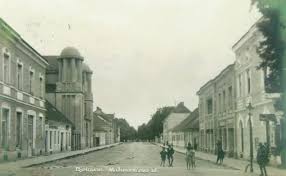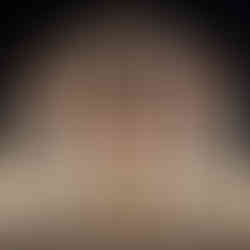Bjelovar: Croatia’s Friendliest City – History, Culture & Festivals
- Teo Drinkovic
- Sep 4
- 5 min read
Bjelovar, Croatia, From Its 1756 Founding by Empress Maria Theresa to Today’s Terezijana Festival Epicenter

Introduction
Set on a plateau in the southwestern foothills of Bilogora, nestled between the Bjelovačka and Plavnica rivers, lies the town of Bjelovar. Officially founded in 1756 by Empress Maria Theresa as a planned military center and administrative base for the Križevac and Đurđevac Frontier Regiments to defend against the Ottoman Empire.
The modern town grew atop a rectangular fortress with orthogonal streets divided into 36 blocks, an unusual military urban design. Although Maria Theresa ordered the city’s founding, she never visited it in person.
The fortress, originally surrounded by walls and bastions, was dismantled in the early 19th century to make space for urban expansion. Though built for military purposes, Bjelovar developed into a charming, human-sized town, today celebrated for the warm-hearted character of its inhabitants and affectionately known as the "friendliest city in Croatia."
A Brief History of Bjelovar
Although formally founded in 1756, the area around Bjelovar has been inhabited since prehistoric times, with settlements from the Starčevo, Korenovo, Sopot, Lasinja, Vučedol cultures, among others.
During the Roman era, a key crossroads and military camp existed where today’s Matoš Square and Stjepan Radić Square are located, as signified by archaeological findings. visitbjelovar.hr
Source: Google.com
The most notable Roman relic, a relief depicting Iphigenia, is integrated into the portal of what is now the Cathedral of St. Teresa of Avila.
The first written mention of the settlement dates to 1413. In the 15th and 16th centuries, recurring Ottoman invasions led to depopulation and people living in small fortified settlements.
Bjelovar appears on a 1639 map by Johann Winkler as “Wellovar,” and later as a wooden fort or guard post. On Stjepan Glavač’s 1673 map, it’s marked as the fort-guard “Belovac”.
In 1756, Maria Theresa officially founded the modern fortress-town as the military and administrative center of the Varaždin Generalate. The city’s initial construction was overseen by Baron Philipp Lewin von Beck, and many Czech and Croatian peasants were settled as the workforce. Wikipedia
Empress Maria Therese
The parish church of St. Teresa of Avila began construction under her decree, completed in 1772, and the Piarists founded the first public school there. WikipediaWikipedia.
In 1771, the Empress confirmed Bjelovar’s status as a privileged frontier city, sparking demographic and economic growth. Wikipedia
Over time, the city expanded beyond the fortress and became the administrative center of Bjelovar–Križevci County. In 1874, it was declared a free royal town. Today, Bjelovar is the seat of Bjelovar-Bilogora County, a vibrant hub in central Croatia. Wikipedia
The railway’s arrival, connecting Križevci–Bjelovar in 1894 and Bjelovar–Kloštar in 1900, spurred rapid growth.
During WWII, the synagogue was closed and the Jewish community was nearly annihilated. Yet, in the post-war period, the town museum (established in 1949) and an industrial zone helped revive Bjelovar.
On September 29, 1991, during the Croatian War of Independence, a significant cache of military equipment was captured during the siege of the JNA barracks. The commanding officer detonated part of the explosives depot, killing 11 Croatian soldiers. A memorial site now stands there, and September 29 is commemorated annually as Bjelovar City Day.
The memorial site Barutana
Economy, Sports & Culture
Bjelovar is known as the “City of Cheese” due to its long-standing dairy tradition; cheese, milk, and cream are regional staples. visitbjelovar.hr
Its industry spans dairy, biscuits (famous Koestlin), tractors, wood, metal, and construction goods. Sporting pride comes from its handball club, formerly named Partizan, which became European champions in 1972. The city’s sports hall is named “Dvorana Europskih Prvaka” (Hall of European Champions) in their honor. visitbjelovar.hr
Cultural life thrives through the BOK Festival (Bjelovar Echoes of Theatre), founded by actor Goran Navojec, a Bjelovar native. Held in late April and early May over two weeks, the festival showcases top theatrical performances from Croatia and the region, with guest foreign troupes and side events like a charity handball tournament, retro party, theatrical moto-alka, and a live actor exhibition.
The other hallmark is Terezijana, held since 1996 (29 iterations as of 2025), a five-day cultural-tourist festival celebrating Bjelovar’s founding by Empress Maria Theresa, held every second weekend in June. 2025’s festival ran June 18–22. visitbjelovar.hr
Events include costumed reenactments of the empress’s (legendary) arrival, musical performances, exhibitions, gastronomy, workshops, and family attractions. Terezijana
Other events include the international Gudovac Fair, DOKUart, Jazzice, and the Christmas Gala. Enthusiasts of riddles celebrate the city’s title “Enigmopolis,” the Croatian capital of puzzles, thanks to the activities of the puzzle society Čvor. visitbjelovar.hr
Source: Google.com
Notable Monuments & Attractions
Cathedral of St. Teresa of Avila: Built 1765–1772 (tower added 1774), redesigned by Hermann Bollé post-1880 earthquake, elevated to cathedral in 2009. It was struck by a grenade on September 29, 1991, during the war; a memorial plaque honors the three women killed in the attack. Beneath the cathedral is an underground burial corridor used sparingly. Wikipedia
Bjelovar Synagogue / House of Culture: Built in 1917 in the Secession style by Hönigsberg & Deutsch; now serves as a cultural center.
Music Pavilion: Located in the central park and made from world-famous white Brač marble, one of Europe’s largest and most beautiful, it regularly hosts musical events.
18th-Century Statues Around the Pavilion: Four statues (Saint Teresa of Avila, Saint George, Saint Helena of the Cross, Saint John of Nepomuk) erected in 1777–78; restored and reinstalled in 2000. The sculptor remains unknown.
City Museum: Preserves approx. 40,000 artifacts, including works by renowned artists such as Edo Murtić and Vojin Bakić, with occasional exhibitions of Ivan Meštrović’s pieces.
Memorial Sites: Barutana honors 11 defenders who died when explosives warehouses were blown up during the JNA base takeover (September 29, 1991). Lug commemorates victims of communism; Borik honors partisans and WWII victims.
Underground Corridors: Burial corridors beneath the cathedral that are little known and infrequently used.
Wellovar Spa: A thermal spa project under construction, slated for completion in summer 2026; expected to rank among Europe’s most modern and boost wellness and sports tourism. This is a geothermal, energy self-sufficient sports and recreational complex in Veliko Korenovo, named Wellovar, a blend of “well” (source/well-being) and “var” (referring to the place’s name origin). It represents a new category of active regeneration, beyond classic wellness.
Source: Google.hr
Conclusion
If you have the chance to visit Croatia, I wholeheartedly recommend exploring Bjelovar and its surroundings. Although I’m originally from Hvar, I currently call this place home.
Bjelovar offers peaceful living and much more, from rural tourism and historical landmarks to vibrant culture, wine routes, and lively nightlife. There’s truly something for everyone, and you’ll never be bored.

























Feel free to comment!